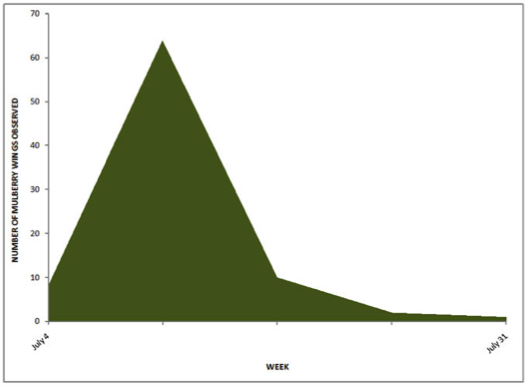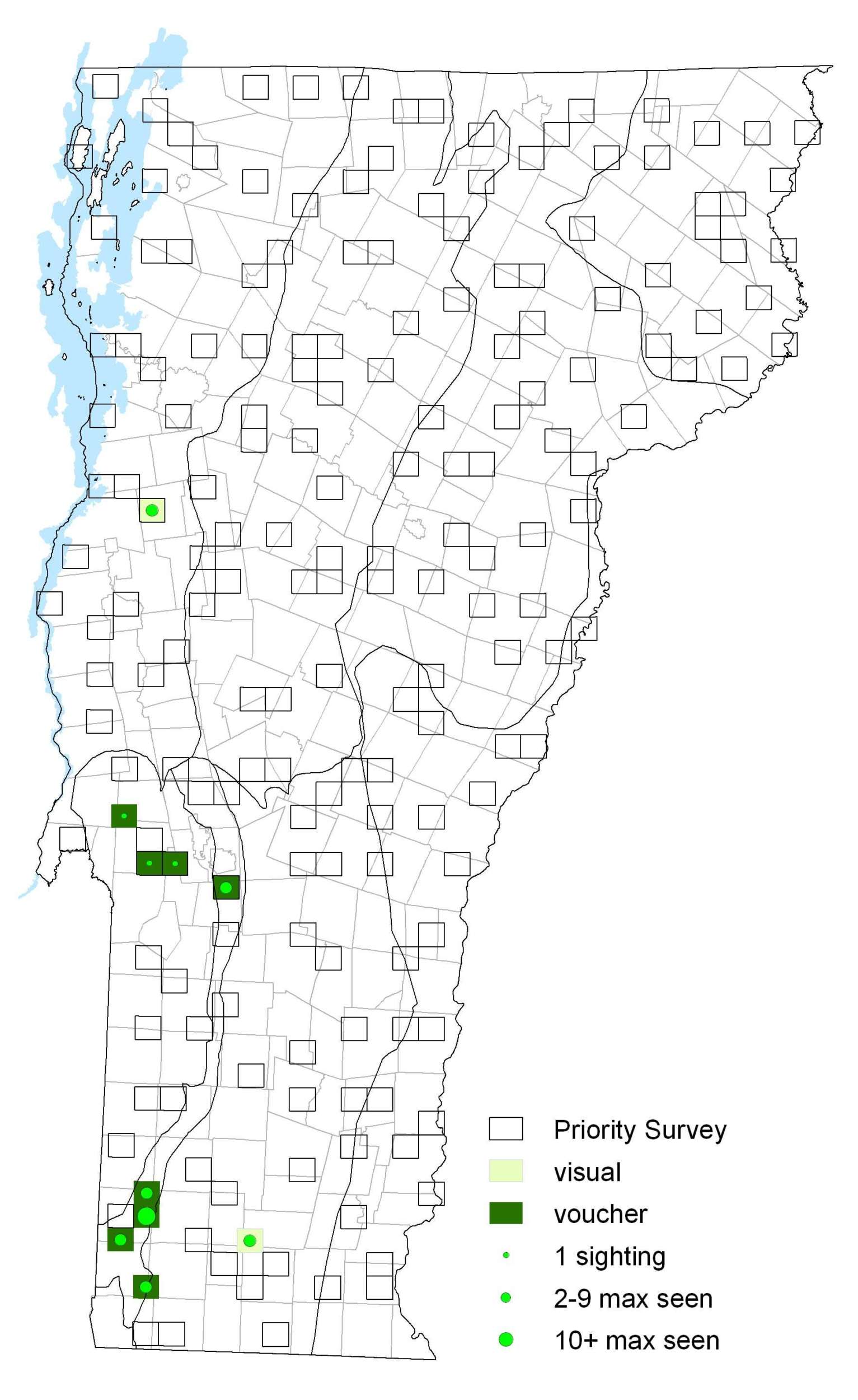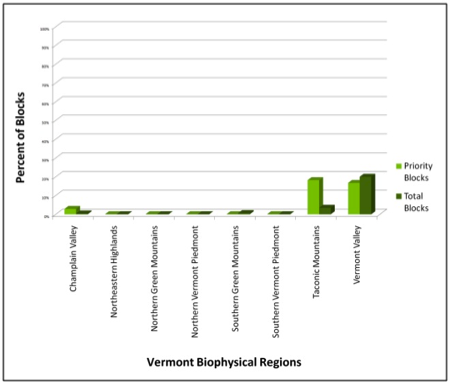|
Resident Conservation Status North American Range |
It is often associated with Black Dash as they have similar ranges, flight times, habitats and host plants. It has a low and weak flight. If you’re leaving a path through a sedge wetland in pursuit of this butterfly, turn and look behind you — the Mulberry Wing might be using your path as a highway. Its airplane-shaped marking on the underside of the hindwing is unmistakable and an easy way to identify this skipper.
Identification
This is a small skipper and males lack a stigma. Wings are dark brown to black, relatively short and rounded. Upperside has small (male) or larger (female) yellow spots. Underside of hindwing has a large irregular yellow patch; rare individuals are rust colored and have no patch.
Flight
During VBS it had one brood and was only found in July. In Massachusetts, however, its flight period has been documented from the second week of July through early August. Extreme dates: 4 July 2002 in Dover (J. Parker) and 31 July 200 in 2006 in Castleton (R. Pilcher).
Distribution and Habitat
Found both historically and during VBS in southwestern Vermont. It inhabits sedge wetlands, often with the Black Dash and Dion Skipper, and can sometimes be found in bogs, fens and wet meadows. Only know hostplant is Tussock or Upright Sedge (Carex stricta), but it is likely that there are others. Adults nectar on Swamp Milkweed (Asclepias incarnata), Common Milkweed (Asclepias syriaca), and possibly other wetland flowers.







